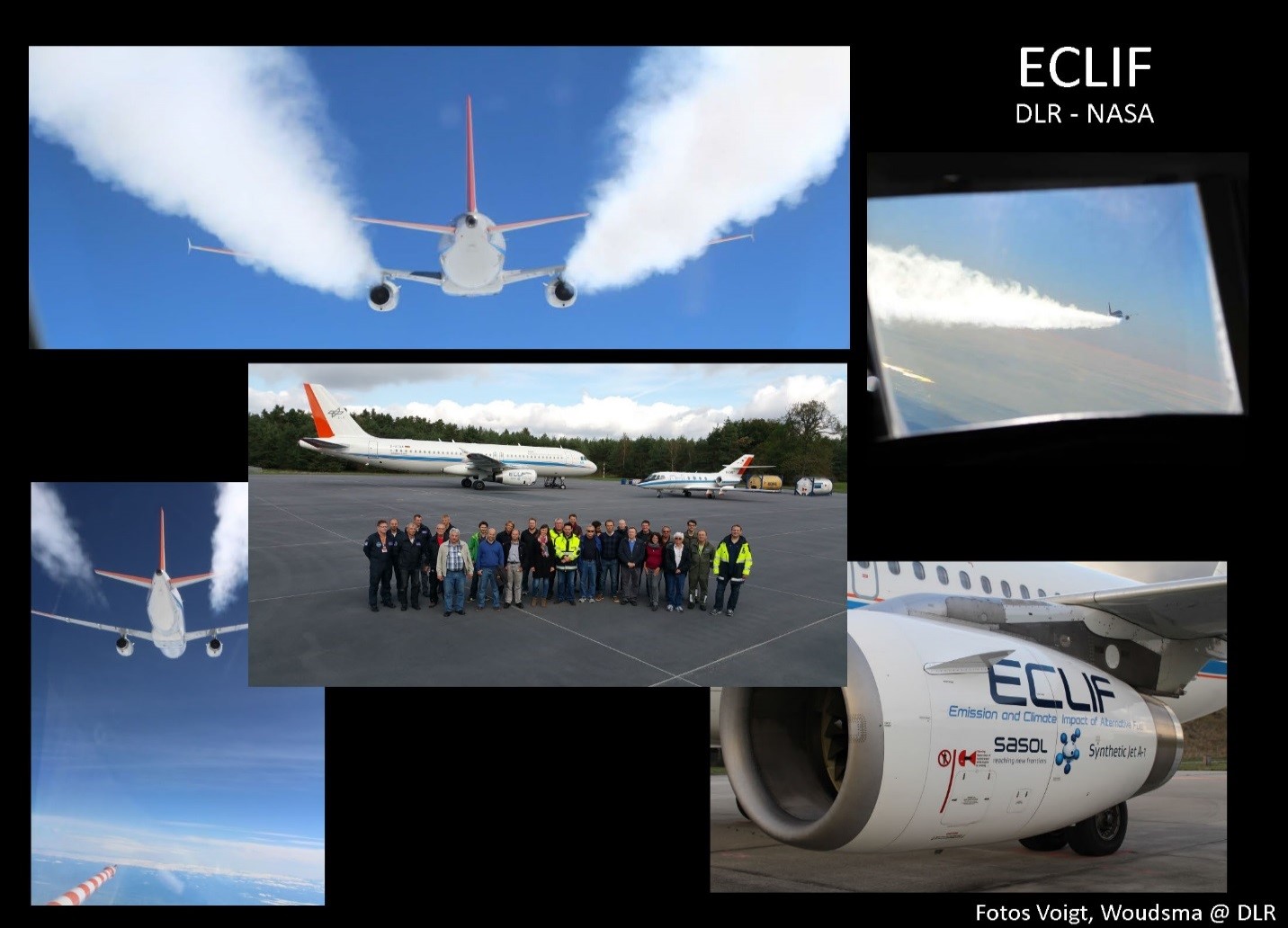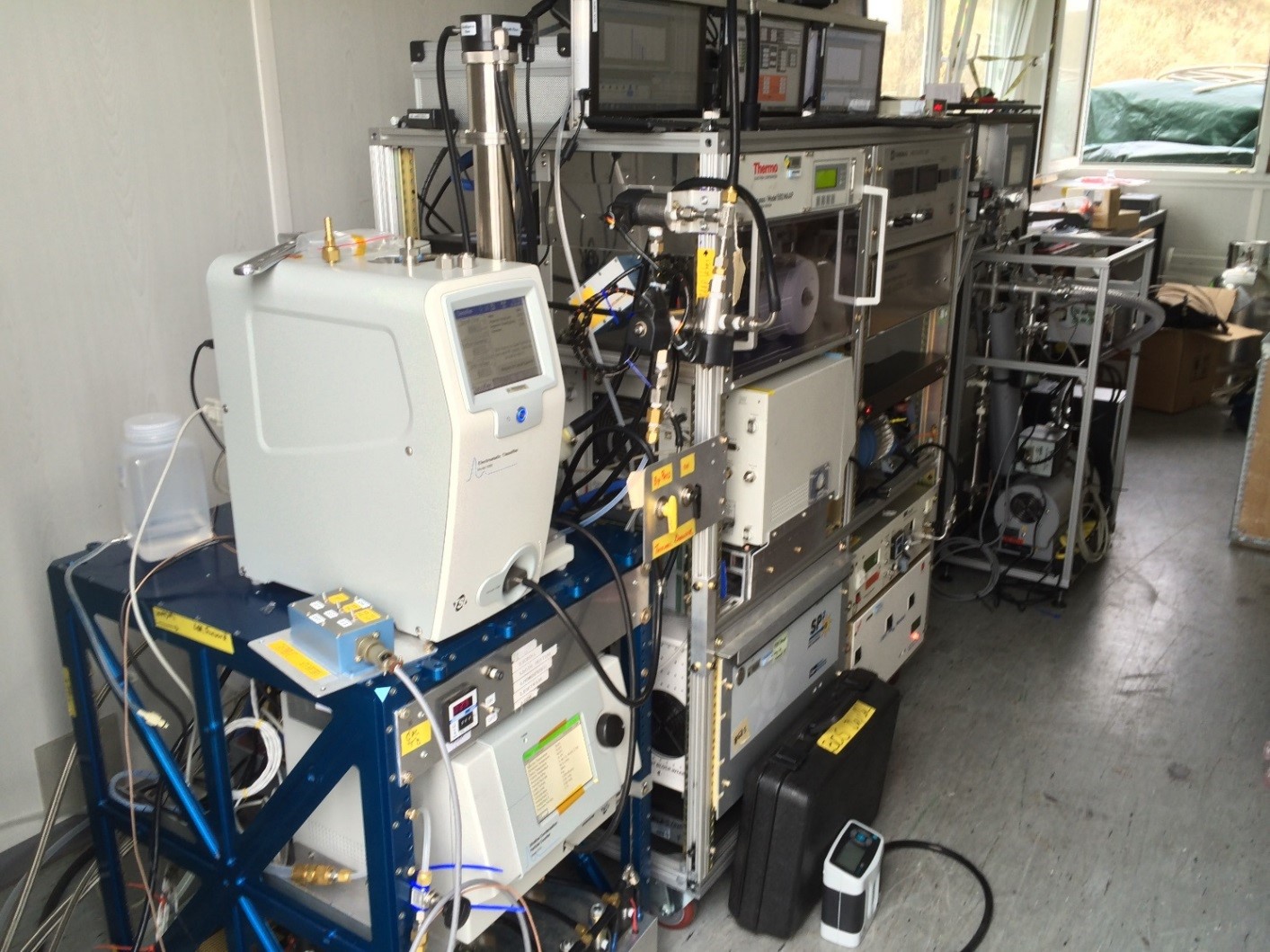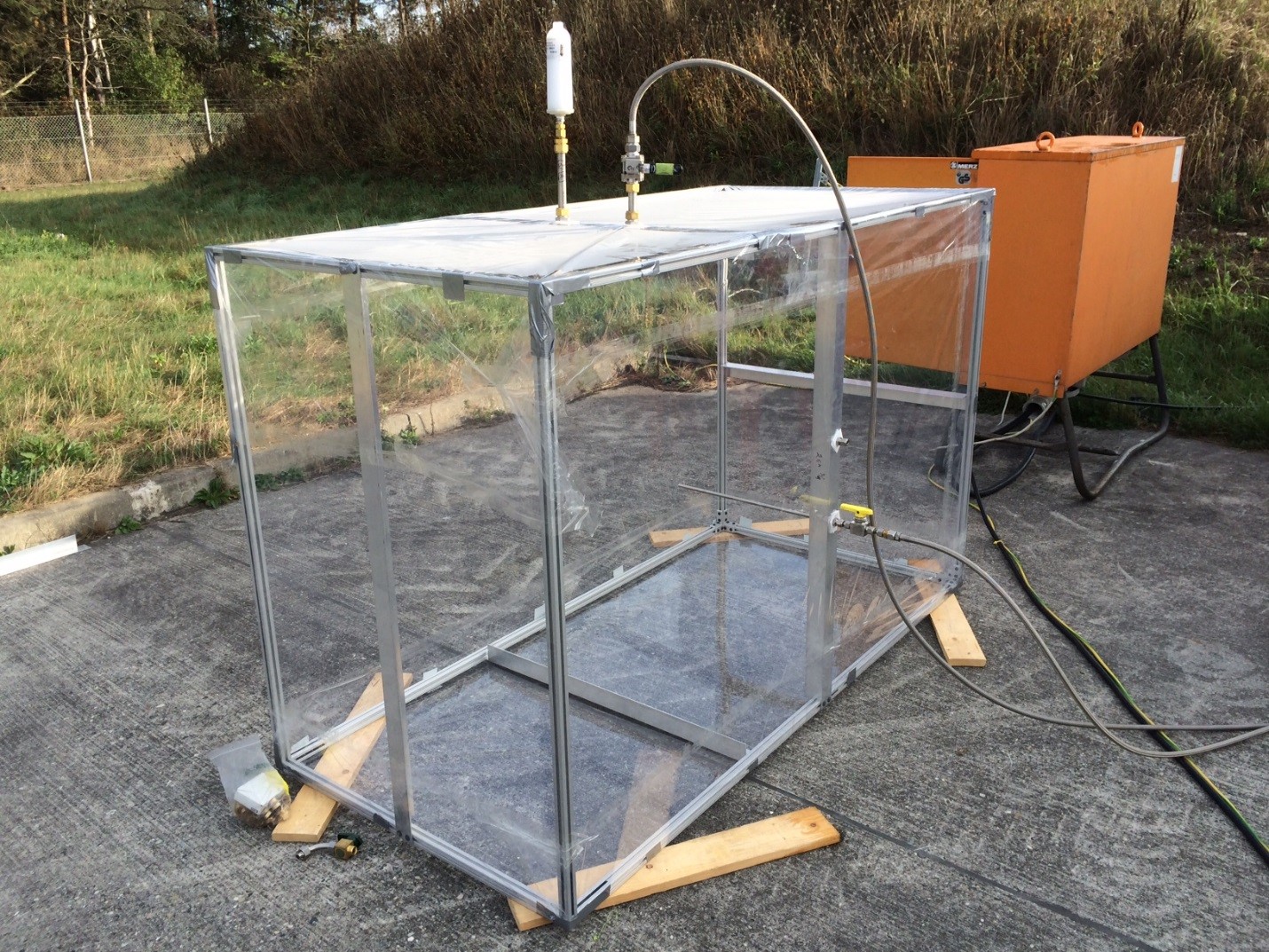 |
 |

| Home | Meet the Team | In The News | Aeronautics Research | Atmospheric Research | Instruments | Publications | Data |
|
||||||||||

|
||||||||||
| ||||||||||
|

Project: ECLIF
Full Name: Emission and Climate Impact of Alternative Fuels
Homepage: none
Platform/Location/Time: Manching Air Base, Germany, September-October 2015
Overall Goal:
What we studied:
Some Cool Pics:
DLR ATRA aircraft being towed into position, 30-m ahead of the inlet probes for ground emission testing.

NASA (foreground) and University of Innsbruck (far right) instrument racks.

Teflon film covered chamber for conducting photochemical oxidation studies of the various test fuels.
|

|
Page Curator: Jay Madigan NASA Official: Bruce Anderson Page Last Modified: |
|
+ NASA Communications Policy + Freedom of Information Act + Budgets, Strategic Plans and Accountability Reports + Inspector General Hotline + Accessibility at NASA |
|
+ USA.gov + Open Government at NASA + Privacy Policy and Important Notices + Multimedia Browser Plug-ins |